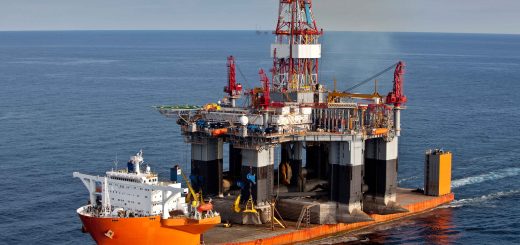5 Major Errors To Avoid In Vessel Clearance

Vessel clearance is about the most complex aspect of the maritime logistics industry. It’s so elaborate and technical that it requires top-notch expertise to handle the entire end-to-end process – including documentation, communication and interface with all regulatory authorities. Since Nigeria is our focus, a clearing agent must go through regulatory agents like The Nigerian Customs Services, Nigerian Ports Authority (NPA) and Nigerian Maritime & Safety Agency (NIMASA) and satisfy all requirements to ensure a smooth inward and outward vessel clearance.
Every vessel that calls at the Nigerian port is subjected to regulatory scrutiny and checks which looks out for the registration of crew members with immigration authorities; registration of the vessel itself with the NPA, Pilotage charges to NIMASA, Temporary Import (TI) Processing (for project-oriented vessels) with Customs; mooring; inward vessel clearance; issued Statement of Fact; Notice of Readiness and outward clearance.
Errors that must be Avoided in Vessel Clearance
Given the complexity of the entire vessel clearance process, the following are 5 major errors that must be avoided when handling project-oriented or cargo-carrying vessel clearance in Nigeria:
- Engaging an incompetent agent
- Failure to Secure Ship Entry Notice at the appropriate time
- Wrong declaration
- Wrong documentation
- Creating process gaps
1. Engaging an incompetent agent: Engaging an incompetent agent will bring about inefficiencies, costly delays in the vessel clearance process and costly documentation errors. That is why experts must be engaged to handle the technical intricacies and detail involved in this exercise to guard against potential errors and guarantee quick turn-around of the vessel clearance process.
2. Failure to Secure Ship Entry Notice at the appropriate time: Ship Entry Notice (SEN) must be sent to Nigeria Ports Authority (NPA) online two months before the arrival of vessel. This would guarantee that the vessel would have berthing facility on arriving the shores of Nigeria. Failure to have this done as required means the vessel will queue-upon arrival and incur demurrages.
3. Wrong declaration: This can also result from incorrect or incomplete details of cargo and crew in the manifest submitted to regulatory authorities. The manifest should provide comprehensive and accurate information on the entire content of the vessel. The information contained in the manifest usually includes cargo volume, sizes, weights, shapes, ownership, nature of the cargo and the list of crew members. Incorrect declaration is usually costly and time-consuming due to sanctions, the amount of time it takes to resolve the errors.
4. Wrong documentation: This can occur when the vessel agent’s application to Customs regarding detail of the content of vessel contained in the manifest attached to the application is inaccurate. The application submitted to Customs for approval must capture the precise content of the vessel – including nature of cargo, volume, weight, and dimension and the vessel registration license. An agent is also expected to send a list of all crew members and their international passports to the Nigerian Immigration Services for immigration clearance before crew members can step-out of the vessel. If there are errors in details provided both on vessel crew and cargo, the consequences are usually very costly and that is why the potential for such errors must be identified early and nipped in the bud.
5. Creating Process Gaps: Process gaps can occur when a checklist of activities in vessel clearance process is not adequately outlined or followed as documented in. For instance, you can get every other thing right and still fail to invite regulatory authorities to carry-out inspection on crew and the entire content of the vessel. Authorities including the Nigerian Customs (Boarding & Enforcement unit), Port Health (Quarantine Services), Ships Agents and NPA. Here, a routine cross-checks carried-out on cargo manifest, crew list, Vessel hygiene and the health status of crew members are ascertained to avoid the transfer of communicable diseases in the country. This and several others is a very important aspect of the vessel clearing process that must be done before the vessel is certified to have fulfilled all requirements.
The foregoing is just some of the major errors to avoid in vessel clearance and this can be easily achieved when the right agents are engaged even before the vessel sets sail from origin.
Fortune Global has demonstrated expertise and capacity to deliver on complex turnkey projects – including vessel clearance for some of the very best organization in the Oil & Gas and project-based industries.
Our most recent stroke of genius was the masterly handling of the inward clearance and logistics of the EGINA FPSO Vessel. It came as no surprise to some industry stakeholders that we were appointed as the logistics agents for the inward clearance of this massive vessel because we have consistently demonstrated commitment to excellence and handling projects of similar nature in the past few years and in the years to come.
Our clients are rest of assured of our pedigree of:
- Adherence to industry best practices
- 100% regulatory compliance
- Accurate documentation and timely vessel clearance
- Expertise in marine logistics
- Planning and designing efficient logistics workflow for clients to maximize time and cut needles cost.
Read more: Procedure for vessel clearance



